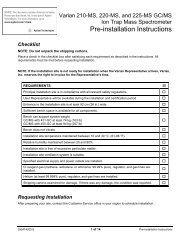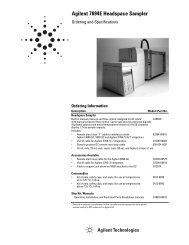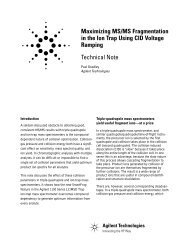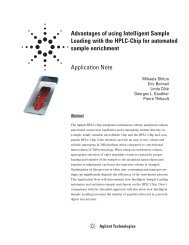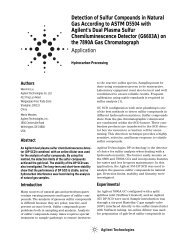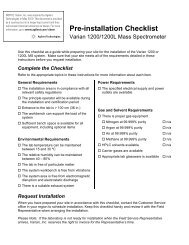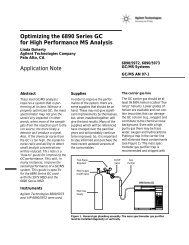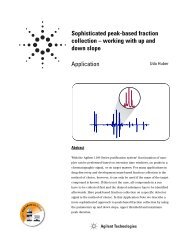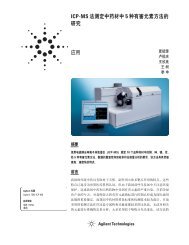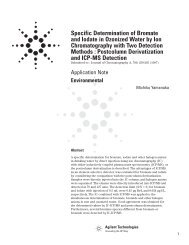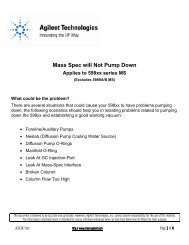Microplate Barcode Labeler User Guide - Agilent Technologies
Microplate Barcode Labeler User Guide - Agilent Technologies
Microplate Barcode Labeler User Guide - Agilent Technologies
You also want an ePaper? Increase the reach of your titles
YUMPU automatically turns print PDFs into web optimized ePapers that Google loves.
Chapter 6: Running a print job<br />
VCode <strong>User</strong> <strong>Guide</strong><br />
117<br />
Using Excel to<br />
create a file<br />
You can also save data in a Microsoft Excel spreadsheet as a commaseparated<br />
value file or tab-delimited text file. As the directions for doing<br />
this vary with the version of Excel, consult the Excel documentation for<br />
further instructions.<br />
Related information<br />
For more information about...<br />
See...<br />
Data source definition and types “About data sources” on page 114<br />
Creating an Excel data source<br />
Introduction<br />
This topic explains how to create a data source from a Microsoft Excel<br />
spreadsheet for use in a schema.<br />
Excel version<br />
support<br />
Example<br />
!! IMPORTANT !! PlateTag only supports Excel 2002 files. If you<br />
are using a different version of Excel, export the data as a .csv file<br />
and use that in the schema instead.<br />
The following example shows a spreadsheet created in Excel 2002 that<br />
can be used as a data source for the VCode.<br />
The first row is a “header” row that identifies the bar code fields that the<br />
data pertains to. The first column is used to help organize the data — it<br />
does not contain data.<br />
The data cells in each row are given a named range. To illustrate this, in<br />
the following screenshot cell A2 contains the text PCR1. The three data<br />
cells in the same row were designated as a named range with PCR1 used<br />
as the name.<br />
Procedure<br />
To create an Excel data source:<br />
1. Open Microsoft Excel.<br />
2. In the first row of the file, type names for the fields that will be<br />
displayed in the PlateTag schema.<br />
You can use any names. Their purpose is to create column headings<br />
for the data.



